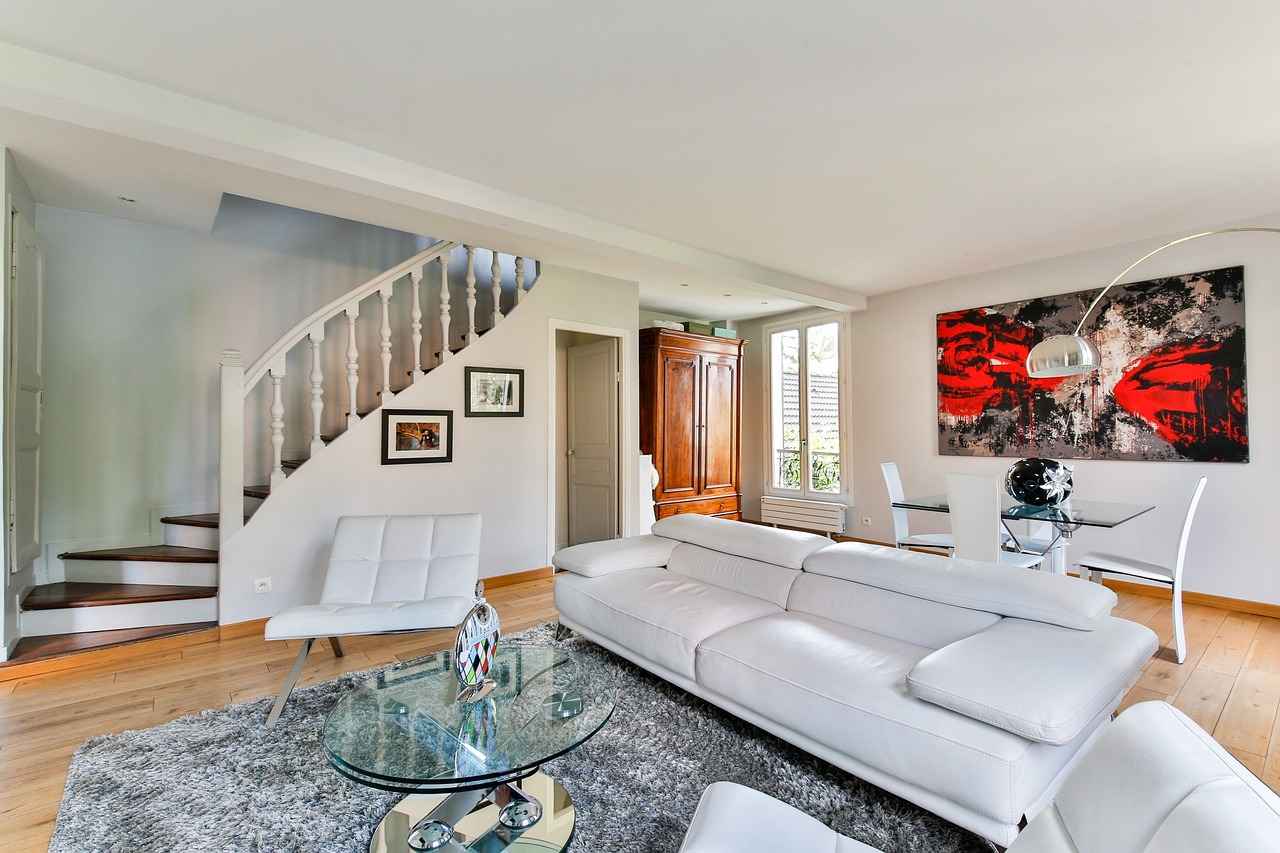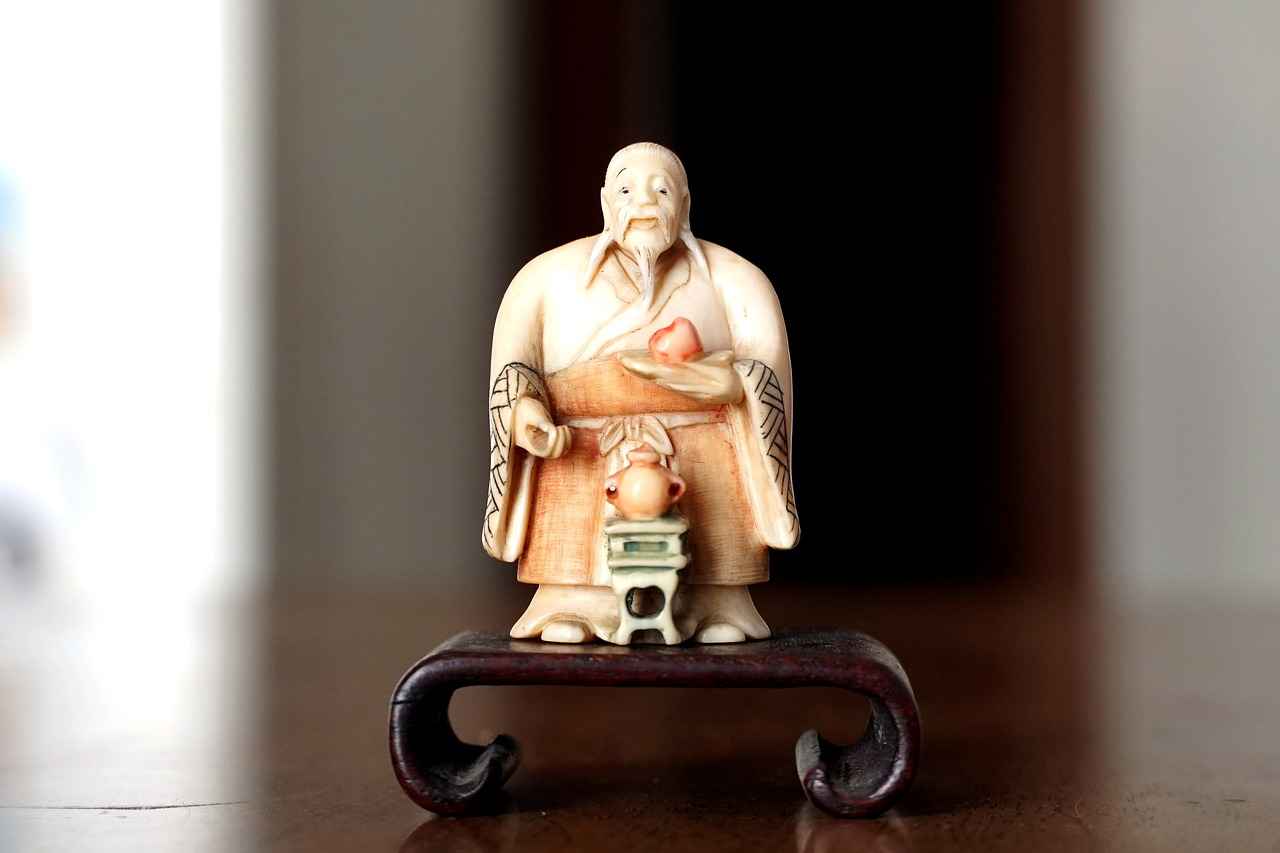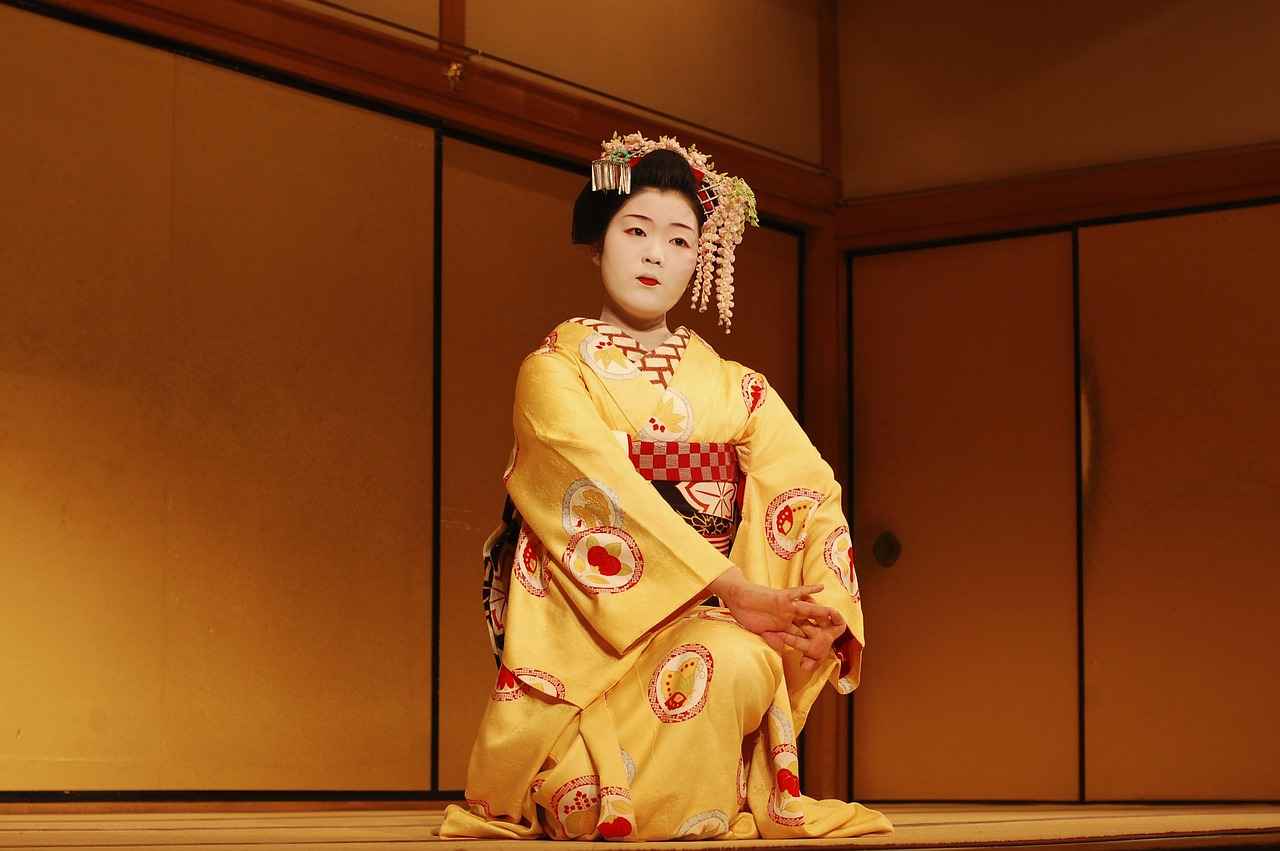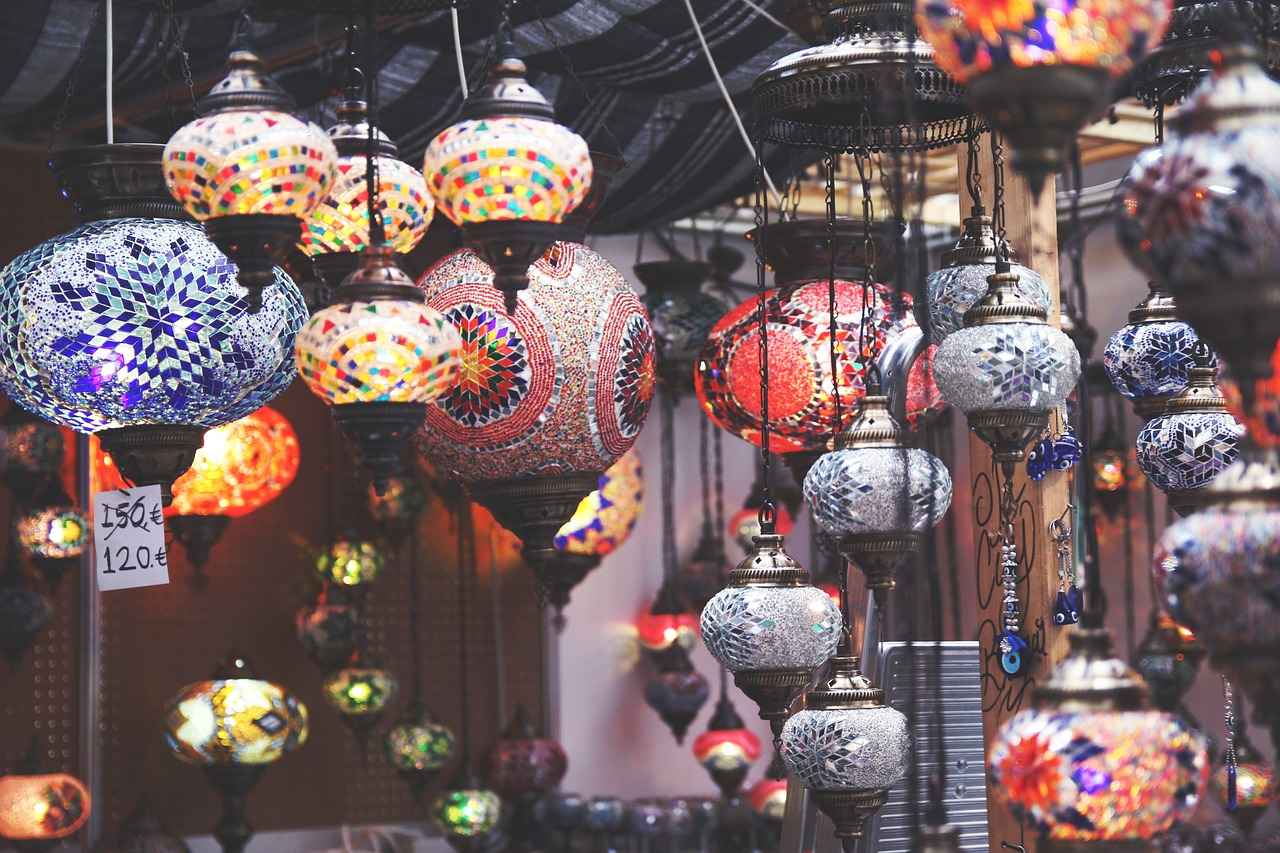Explore the art of incorporating traditional Japanese kimono aesthetics into modern home decor, blending cultural heritage with contemporary design for a unique living space. The kimono, a symbol of Japan’s rich cultural history, offers vibrant colors and intricate patterns that can transform your home into a sanctuary of style and tradition.
Understanding the Kimono Aesthetic
The kimono is more than just clothing; it embodies a deep cultural significance. Each design tells a story, often reflecting nature or seasonal changes. By integrating these elements into your home decor, you can create spaces that are not only visually striking but also rich in meaning.
Choosing the Right Kimono Fabrics
- Silk: Known for its luxurious sheen, silk brings elegance to any space.
- Cotton: A practical and versatile choice, perfect for everyday use.
- Synthetic Blends: Affordable and easy to maintain, these fabrics can mimic traditional designs.
Incorporating Kimono Patterns into Decor
Utilizing traditional kimono patterns such as Asanoha (hemp leaf) and Seigaiha (waves) can add a dynamic visual element to your interiors. Consider creating feature walls or accent pieces that highlight these designs, making your living space both unique and culturally enriched.
DIY Kimono-Inspired Home Projects
For the creatively inclined, repurposing old kimonos can lead to stunning home decor items. Transform vintage kimonos into:
- Table runners that serve as conversation starters.
- Cushions that add a pop of color and texture.
- Wall art that personalizes your space.
Conclusion: Embracing Japanese Culture at Home
Incorporating kimono aesthetics into your home decor allows you to celebrate Japanese culture while creating a harmonious blend of tradition and modernity. By thoughtfully selecting fabrics and patterns, you can enrich your living space with beauty and significance.

Understanding the Kimono Aesthetic
The kimono is more than just a garment; it is a symbol of Japanese culture and history, reflecting the artistry and craftsmanship of its makers. Traditionally worn on special occasions, the kimono is adorned with vibrant colors and intricate patterns that tell stories of nature, seasons, and cultural significance. These elements not only make the kimono visually appealing but also offer inspiration for home decor choices.
Each kimono is a canvas, showcasing a variety of designs that can be categorized into different styles. For instance, the Asanoha pattern, which resembles hemp leaves, symbolizes growth and resilience, while the Seigaiha pattern, depicting waves, represents peace and tranquility. By incorporating these patterns into your home, you can create spaces that are not only beautiful but also rich in meaning.
- Vibrant Colors: The colors of a kimono are carefully chosen to convey emotions and seasonal themes. For example, red signifies happiness and good fortune, while blue evokes calmness. Using these colors in your home decor can enhance the atmosphere and evoke specific feelings.
- Intricate Patterns: The detailed designs found in kimonos can be translated into various home decor elements such as wallpaper, fabrics, and art pieces. These patterns can serve as a focal point in a room, adding depth and interest.
- Textural Variety: The different fabrics used in kimonos, such as silk and cotton, offer various textures that can be utilized in home decor. Mixing these textures can create a harmonious and inviting space.
In conclusion, the aesthetic of the kimono extends beyond clothing; it provides a wealth of inspiration for home decor. By embracing these cultural elements, you can transform your living space into a sanctuary that reflects the beauty and depth of Japanese tradition.

Choosing the Right Kimono Fabrics
is essential for creating a harmonious and inviting atmosphere in your home. The fabric of a kimono not only influences its aesthetic appeal but also affects the overall ambiance of your living space. Here, we will delve into various kimono fabrics such as silk, cotton, and synthetic blends, highlighting how each material can uniquely shape the look and feel of your home.
Silk is often celebrated as the most luxurious fabric used in kimonos. Its natural sheen and smooth texture can add an air of elegance to any room. When used in home decor, silk can create a sophisticated atmosphere, whether through decorative cushions, elegant drapes, or stunning wall hangings. The rich colors and intricate patterns of silk kimonos can serve as stunning focal points in your interior design.
Cotton, on the other hand, offers versatility and practicality. It is generally more affordable and easier to care for compared to silk. Cotton kimonos can be used in a variety of home decor applications, from casual throw pillows to comfortable bedding. The breathable nature of cotton makes it an ideal choice for everyday use, allowing you to enjoy the beauty of kimono patterns without the high maintenance associated with silk.
Synthetic blends are becoming increasingly popular for their durability and affordability. These fabrics often combine the best qualities of natural fibers with the resilience of synthetic materials. They can mimic the look of silk or cotton while being easier to clean and maintain. This makes them a practical choice for families or those seeking a low-maintenance option for their home decor.
In summary, the choice of kimono fabric can significantly impact the aesthetic and functionality of your home. By understanding the unique characteristics of silk, cotton, and synthetic blends, you can make informed decisions that reflect your personal style and enhance your living space.
Silk: The Luxurious Choice
Silk is often heralded as the pinnacle of luxury in the realm of kimono fashion. Its unique characteristics not only define its elegance but also contribute significantly to the overall aesthetic appeal of any space. When you think of silk, envision the soft sheen that catches the light, creating an enchanting glow that transforms the ordinary into the extraordinary.
This luxurious fabric has a rich history intertwined with Japanese culture, making it a preferred choice for traditional kimonos. The smooth texture of silk not only feels delightful against the skin but also adds an element of sophistication to your home decor. Incorporating silk into your interior design can elevate the ambiance, providing a sense of comfort and lavishness.
| Benefits of Silk in Home Decor | Description |
|---|---|
| Sheen and Luster | The reflective quality of silk enhances the visual appeal, making spaces feel more vibrant. |
| Durability | Despite its delicate appearance, silk is surprisingly strong and can endure years of use. |
| Insulation | Silk regulates temperature well, providing warmth in winter and coolness in summer. |
Incorporating silk into your home can be achieved through various means. Consider using silk throw pillows, curtains, or even wall hangings that showcase intricate patterns and rich colors. These elements not only act as focal points but also tell a story of cultural heritage and artistry.
In conclusion, silk’s unparalleled luxury and versatility make it a standout choice for those looking to enhance their interior design. By embracing silk, you invite a piece of Japanese tradition into your home, creating a space that is both stylish and culturally rich.
Care and Maintenance of Silk
Silk is a luxurious fabric known for its luster and softness, making it a popular choice in home decor. To maintain the beauty and longevity of silk fabrics, it is essential to follow specific care practices.
- Gentle Washing: Always hand wash silk fabrics or use a delicate cycle on your washing machine. Use cold water and a mild detergent specifically designed for silk.
- Avoid Harsh Chemicals: Steer clear of bleach and fabric softeners, as they can damage the fibers and diminish the fabric’s natural sheen.
- Drying Techniques: Never wring out silk to remove excess water. Instead, lay the fabric flat on a clean towel to absorb moisture, then hang it to dry away from direct sunlight to prevent fading.
- Ironing Silk: If necessary, iron silk on a low heat setting, preferably while it is still slightly damp. Always place a thin cloth between the iron and the silk to avoid scorching.
- Storage: Store silk items in a cool, dry place. Use breathable garment bags or cotton sheets to protect them from dust and light exposure.
By following these best practices, you can ensure that your silk fabrics remain vibrant and elegant, enhancing your home decor for years to come.
Incorporating silk into your living space not only adds a touch of sophistication but also reflects a deep appreciation for quality and craftsmanship. With proper care, silk can be a lasting element of your home’s aesthetic.
Using Silk in Home Decor
Silk is a luxurious fabric that has been cherished for centuries, known for its soft texture and elegant sheen. When it comes to home decor, incorporating silk can elevate the aesthetic of any space, making it feel more sophisticated and inviting. Here are some creative ways to use silk in your home:
- Throw Pillows: Adding silk throw pillows to your sofas or chairs can instantly enhance the comfort and style of your living room. Choose vibrant colors or intricate patterns that reflect your personal taste.
- Wall Hangings: Silk wall hangings can serve as stunning focal points in your home. Consider using a piece of silk fabric with traditional Japanese patterns, which can add a cultural touch to your decor.
- Table Runners: A silk table runner can transform your dining experience. Pair it with elegant dinnerware to create a refined atmosphere for special occasions.
- Curtains: Silk curtains not only provide a luxurious feel but also allow natural light to filter through beautifully. They can add a sense of grandeur to any room.
- Upholstery: Consider using silk for upholstery on chairs or benches. This choice adds a unique flair and can be a conversation starter for guests.
When selecting silk for your home, consider the color palette and patterns that complement your existing decor. Additionally, keep in mind that silk requires special care; it is recommended to dry clean silk items to maintain their quality and vibrancy.
In conclusion, silk is a versatile and elegant choice for home decor. By incorporating silk elements, you can create a space that feels both luxurious and inviting, reflecting your unique style and appreciation for fine materials.
Cotton: The Versatile Option
When it comes to home decor, cotton kimonos emerge as a remarkable choice, seamlessly blending practicality with style. Their affordability makes them accessible for a wide range of budgets, allowing homeowners to embrace the beauty of Japanese culture without breaking the bank. Additionally, cotton kimonos are known for their ease of care, making them ideal for everyday use in a busy household.
One of the key benefits of using cotton kimonos is their durability. Unlike more delicate fabrics, cotton withstands the rigors of daily life, including spills and wear, ensuring that your decor remains vibrant and intact over time. This resilience is particularly advantageous for families with children or pets, where durability is paramount.
Moreover, cotton’s breathability contributes to a comfortable living environment. It helps regulate temperature and moisture, making spaces feel cozy yet fresh. This quality is particularly beneficial in various climates, allowing cotton kimonos to be used year-round.
- Versatile Designs: Cotton kimonos come in a myriad of designs and colors, from traditional patterns to modern prints. This versatility allows homeowners to select pieces that complement their existing decor themes.
- Functional Decor: Cotton kimonos can be transformed into various home decor items, including cushions, table runners, and curtains, enhancing the aesthetic appeal of any room.
- Eco-Friendly Option: Choosing cotton kimonos supports sustainable practices, especially when sourced from eco-conscious brands, making it a responsible choice for environmentally-aware consumers.
In conclusion, incorporating cotton kimonos into your home decor not only adds a touch of elegance and cultural richness but also provides practical benefits that enhance everyday living. Their affordability, ease of care, and versatility make them a wise choice for anyone looking to elevate their home’s aesthetic.

Incorporating Kimono Patterns into Decor
Integrating traditional kimono patterns into your home decor not only adds a touch of elegance but also infuses your space with rich cultural heritage. Patterns such as Asanoha and Seigaiha are particularly notable for their aesthetic appeal and symbolic meanings. This guide explores how to effectively use these patterns to create visually stunning and culturally enriched environments.
Understanding Asanoha and Seigaiha Patterns
- Asanoha: This pattern, resembling hemp leaves, symbolizes growth and resilience. Its geometric design can bring a sense of balance and harmony to your decor.
- Seigaiha: Characterized by its wave-like motifs, this pattern represents peace and good fortune. It can evoke a calming atmosphere, perfect for relaxation areas in your home.
Creating Feature Walls
One of the most effective ways to showcase kimono patterns is through feature walls. Consider using wallpaper or fabric featuring Asanoha or Seigaiha to create a striking focal point in your living room or bedroom. This not only adds visual interest but also serves as a conversation starter.
Accent Pieces and Accessories
Incorporate kimono patterns into smaller decor items such as cushions, throws, and table runners. These accent pieces can easily enhance your overall aesthetic without overwhelming the space. For example, a Seigaiha patterned cushion can add a pop of color and a touch of tradition to a neutral sofa.
DIY Projects for Personal Touch
For those looking to add a personal flair, consider DIY projects using old kimonos. Transform vintage fabrics into unique home textiles, such as table runners or wall art, allowing you to create a one-of-a-kind atmosphere that reflects your style.
Conclusion
Incorporating traditional kimono patterns like Asanoha and Seigaiha into your home decor can create a harmonious blend of culture and contemporary design. By thoughtfully integrating these elements, you can enhance the beauty and significance of your living space.
Creating Feature Walls
Designing a feature wall is an excellent way to infuse your space with personality and style. By incorporating kimono-inspired wallpaper or fabric, you can add depth and character to any room. Here’s how to effectively achieve this stunning decor element.
- Choosing the Right Wallpaper or Fabric: Start by selecting wallpaper or fabric that reflects the vibrant colors and intricate patterns characteristic of traditional kimonos. Look for designs that resonate with your personal style and the overall theme of your room.
- Preparing the Wall: Ensure the wall surface is clean and smooth. If you’re using fabric, consider applying a fabric adhesive or a staple gun for a secure fit. Wallpaper should be applied following the manufacturer’s instructions for the best results.
- Measuring and Cutting: Measure your wall carefully to determine how much material you will need. Cut the wallpaper or fabric to size, allowing for a little extra to ensure full coverage.
- Application Techniques: For wallpaper, use a smoothing tool to eliminate air bubbles as you apply it. If using fabric, gently pull it taut as you fasten it to the wall to avoid wrinkles.
- Accessorizing: Once your feature wall is complete, enhance its beauty with complementary decor. Consider adding framed art, mirrors, or even plants that echo the colors and patterns of the kimono design.
Incorporating a feature wall with kimono-inspired elements not only elevates the aesthetic of your room but also creates a unique focal point that tells a story. This approach allows you to celebrate Japanese culture while adding a contemporary twist to your home decor.
Conclusion: A well-designed feature wall can transform your living space, making it feel more inviting and personalized. By choosing kimono-inspired designs, you are not just decorating; you are creating a beautiful homage to a rich cultural heritage.
Accent Pieces and Accessories
Transforming your living space with kimono-inspired accent pieces can infuse your home with a unique blend of tradition and modernity. By incorporating items such as cushions and throws, you can easily showcase the intricate patterns and vibrant colors that are emblematic of the kimono aesthetic. These elements not only serve as decorative accents but also create a warm and inviting atmosphere.
When selecting cushions, look for designs that feature traditional kimono patterns like Asanoha (hemp leaf) or Seigaiha (blue ocean waves). These motifs can be found in various color palettes, allowing you to choose pieces that complement your existing decor. For instance, a set of Asanoha-patterned cushions in soft pastels can add a touch of serenity to a neutral living room, while bold, vibrant Seigaiha throws can become a focal point in a more eclectic space.
| Accent Piece | Suggested Pattern | Color Scheme |
|---|---|---|
| Cushions | Asanoha | Pastels |
| Throws | Seigaiha | Bold Colors |
| Wall Hangings | Uroko | Earth Tones |
Throws are another excellent way to incorporate kimono patterns into your decor. Drape a beautifully patterned throw over your sofa or bed to add texture and warmth. Not only do they serve a practical purpose, but they also enhance the overall aesthetic of your living space, creating a cozy retreat that reflects your personal style.
In addition to cushions and throws, consider other accessories such as table runners and wall art made from kimono fabrics. These items can tie the room together, creating a harmonious look that celebrates Japanese culture. By thoughtfully selecting and arranging these accent pieces, you can create a living space that is both stylish and deeply meaningful.

DIY Kimono-Inspired Home Projects
offer a fantastic way to breathe new life into old kimonos while adding a touch of cultural elegance to your living space. These projects not only promote sustainability but also allow you to express your creativity and personal style. Here are some inspiring ideas that can transform your home decor.
- Transforming Kimonos into Home Textiles: Old kimonos can be repurposed into beautiful home textiles. Consider creating:
- Table Runners: Cut and sew kimono fabric into unique table runners that add a pop of color to your dining table.
- Curtains: Use larger pieces of fabric to craft stunning curtains that filter light beautifully while showcasing intricate patterns.
- Upholstery: Revitalize old furniture by reupholstering chairs or cushions with vibrant kimono fabric, giving them a fresh and stylish look.
- Creating Wall Art from Kimonos: Turn your old kimonos into stunning wall art. Here are a few ideas:
- Framed Fabric Pieces: Stretch pieces of kimono fabric over a canvas or frame for an eye-catching display that highlights the fabric’s unique design.
- Quilts and Tapestries: Combine various kimono pieces to create a quilt or tapestry that tells a story through its patterns and colors.
- Shadow Boxes: Create shadow boxes using kimono fabric and other memorabilia to showcase your love for Japanese culture.
By engaging in these DIY projects, you not only create functional and beautiful items but also honor the rich tradition of kimono craftsmanship. Embrace your creativity and let your home reflect your unique style while being environmentally conscious.
In conclusion, are an excellent way to merge sustainability with personal expression. Whether you choose to transform textiles or create wall art, each project allows you to incorporate the beauty of traditional Japanese fashion into your modern living space.
Transforming Kimonos into Home Textiles
Repurposing vintage kimonos into home textiles is a wonderful way to breathe new life into these beautiful garments. Not only does this practice honor the cultural significance of kimonos, but it also allows you to create unique and personalized decor items for your home.
One of the most popular transformations is creating table runners. To make a stunning table runner, start by selecting a kimono with vibrant colors and intricate patterns. Cut the fabric to your desired length, ensuring the edges are straight. You can leave the edges raw for a bohemian look or hem them for a more polished finish. This addition to your dining space will not only serve a practical purpose but will also be a conversation starter.
Curtains made from kimonos can add an exotic flair to any room. Choose kimonos with lighter fabrics for a flowing effect or heavier materials for a more structured look. Simply sew multiple pieces together to achieve the desired width and length for your windows. The unique patterns and colors will filter light beautifully, creating a warm ambiance.
For those looking to go a step further, consider using kimonos for upholstery projects. Vintage kimono fabric can be used to reupholster chairs, cushions, or even sofas, providing a stunning focal point in your living space. Make sure to choose sturdy kimonos that can withstand wear and tear, and don’t hesitate to mix and match different patterns for a truly eclectic vibe.
Incorporating these elements into your home decor not only promotes sustainability by reducing waste but also allows you to showcase the rich heritage of Japanese textiles. By transforming kimonos into functional art pieces, you create a harmonious blend of tradition and modernity that enriches your living environment.
Creating Wall Art from Kimonos
Transforming kimono fabric into stunning wall art is not only a creative endeavor but also a way to infuse your living space with cultural heritage. By utilizing these beautiful textiles, you can create unique pieces that reflect personal stories and artistic expression. Here are some techniques and ideas to inspire your wall art projects:
- Selecting the Right Kimono: Begin by choosing a kimono that resonates with you. Look for vibrant colors and intricate patterns that will stand out as wall art.
- Framing Techniques: Consider framing sections of the kimono in shadow boxes or traditional frames. This method preserves the fabric while allowing the design to shine.
- Fabric Stretching: Stretch kimono fabric over a canvas or wooden frame for a modern look. This technique allows the fabric to maintain its shape and adds dimension to your artwork.
- Collage Art: Combine multiple pieces of kimono fabric to create a collage. This approach allows you to play with different textures and colors, resulting in a dynamic piece that tells a story.
- Quilting Techniques: If you enjoy sewing, consider quilting small squares of kimono fabric into a larger piece. This can be hung on the wall as a quilted art piece, showcasing the beauty of each fabric segment.
Personal Touch: Incorporating kimono fabric into your wall art not only beautifies your home but also serves as a conversation starter. Each piece can reflect your journey, memories, and appreciation for Japanese culture.
In conclusion, creating wall art from kimonos is a fulfilling way to merge art with tradition. Whether you choose to frame, stretch, or collage, each method allows you to express your creativity while honoring the rich history of kimono textiles.

Conclusion: Embracing Japanese Culture at Home
Incorporating kimono aesthetics into your home decor is a beautiful way to merge tradition with modernity, creating a living space that is not only visually appealing but also rich in cultural significance. The kimono, a symbol of Japanese heritage, offers a wealth of inspiration through its vibrant colors, intricate patterns, and luxurious fabrics.
By thoughtfully selecting kimono fabrics such as silk and cotton, you can infuse your home with a sense of elegance and warmth. Silk, with its lustrous sheen, can be used in various decor elements like throw pillows and curtains, while cotton provides a more casual, yet equally charming, aesthetic. Both materials allow for a versatile approach to design, making it easy to incorporate traditional elements into contemporary settings.
Furthermore, utilizing traditional kimono patterns like Asanoha and Seigaiha can enhance the visual appeal of your space. These patterns can be creatively integrated into feature walls or as accent pieces, adding depth and character to your home. The art of DIY projects using old kimonos not only promotes sustainability but also allows for personalized decor that tells a story.
In conclusion, the harmonious blend of kimono aesthetics into home decor not only enriches your living space but also serves as a celebration of Japanese culture. By embracing these elements, you create an environment that reflects both your appreciation for tradition and your modern lifestyle, resulting in a unique and inviting home.
Frequently Asked Questions
- What is the significance of kimono patterns in home decor?
Kimono patterns, like Asanoha and Seigaiha, are rich in cultural symbolism and can add depth and character to your living space. By incorporating these traditional designs, you not only beautify your home but also celebrate Japanese heritage.
- How can I care for silk fabrics used in home decor?
Caring for silk is essential to maintain its luxurious sheen and longevity. Always dry clean silk items or hand wash them in cold water with a gentle detergent. Avoid direct sunlight to prevent fading, and store them in a cool, dry place.
- Can I use old kimonos for DIY home projects?
Absolutely! Old kimonos can be beautifully repurposed into various home textiles like table runners or wall art. This not only gives a new life to these garments but also adds a unique touch to your decor.
- What types of fabrics are best for home decor?
Silk is known for its luxury and elegance, while cotton offers versatility and ease of care. Depending on your style and budget, both fabrics can be used creatively to enhance your home’s aesthetic.
- How do I create a feature wall using kimono-inspired designs?
To create a striking feature wall, consider using kimono-inspired wallpaper or fabric. Choose a bold pattern and complement it with neutral furnishings to let the wall stand out as a focal point in your room.












